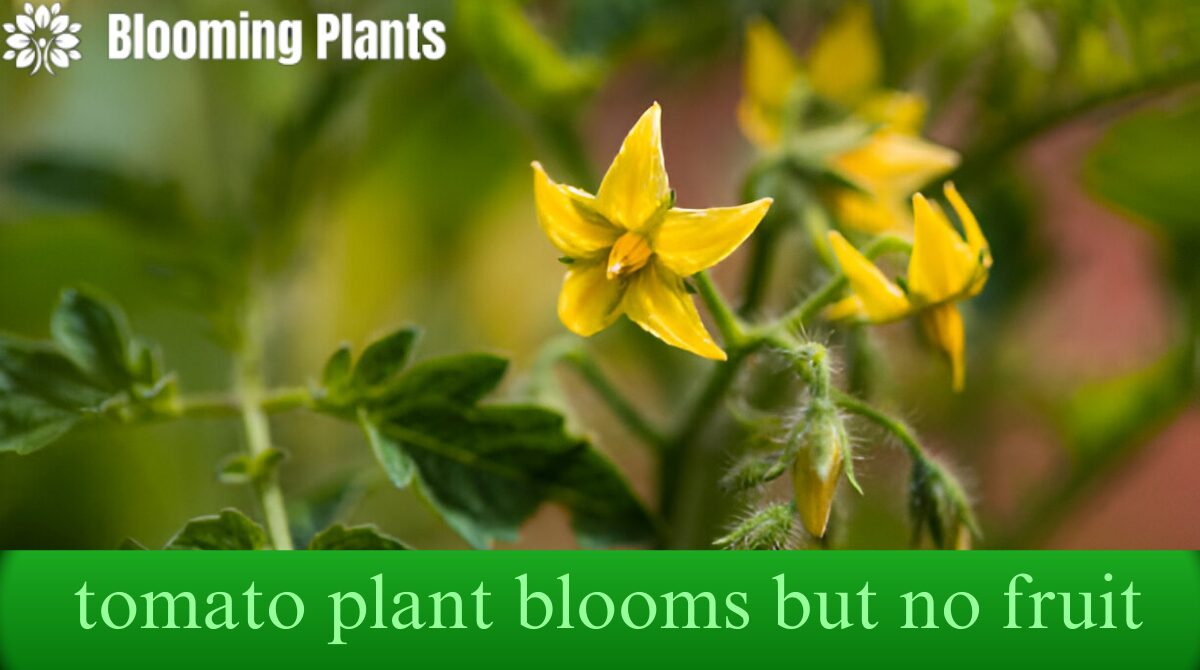Introduction
Tomatoes are among the most popular garden plants worldwide, cherished for their flavorful fruits and ease of cultivation. However, a common frustration for gardeners is when tomato plants bloom profusely but fail to produce any fruit. This problem can be caused by various factors, from environmental issues to improper care practices.
This in-depth guide will explore the reasons behind this issue, effective solutions, and tips to ensure your tomato plants thrive and yield abundant fruit.
Common Causes of Tomato Plants Blooming Without Fruit
Environmental Stressors
Environmental conditions significantly affect the fruiting of tomato plants. Let’s delve into the key factors:
Temperature Extremes
Tomato plants thrive in temperatures between 70°F (21°C) and 85°F (29°C). Temperatures outside this range can prevent pollination, causing blooms to drop.
- High Temperatures: When daytime temperatures exceed 85°F (29°C) or nighttime temperatures stay above 70°F (21°C), tomato flowers may fail to set fruit.
- Low Temperatures: Conversely, temperatures below 55°F (13°C) at night can hinder pollination.
Inconsistent Moisture Levels
Irregular watering can cause blossom drop. Tomatoes need consistent moisture to support healthy blooms and fruit development.
Signs of moisture stress:
- Wilting leaves
- Yellowing or browning of flowers
- Cracked soil
Wind and Humidity
- High Winds: Excessive wind can damage flowers, while extremely dry or humid conditions affect pollen viability.
- Low Humidity: Pollen may become too sticky or dry, making it less effective for pollination.
Pollination Problems
Lack of Pollinator Activity
Tomatoes are self-pollinating, but they still rely on wind or pollinators like bees to move pollen. A lack of pollinators can reduce fruit sets.
- Use companion plants like marigolds or borage to attract pollinators.
- Gently shake the plant or use an electric toothbrush to mimic natural pollination.
Pollen Viability Issues
Pollen becomes less effective when exposed to extreme heat, humidity, or dryness. Without viable pollen, fruit cannot form.
Pro Tip: Check pollen viability by touching the flowers. If pollen doesn’t transfer to your finger, it might be compromised.
Nutrient Imbalances
Excess Nitrogen
Nitrogen is essential for leafy growth, but too much can lead to lush foliage at the expense of flowers and fruit.
Signs of nitrogen overuse:
- Dark green, excessive foliage
- Minimal flower development
Phosphorus and Potassium Deficiency
Phosphorus promotes flower development, while potassium supports overall fruiting. A deficiency in either nutrient can hinder fruit production.
Solutions:
- Use a balanced fertilizer labeled 5-10-10 or 10-20-20.
- Incorporate organic amendments like bone meal (rich in phosphorus) and wood ash (potassium source).
Pruning and Spacing Mistakes
Overcrowded Plants
Tomato plants need adequate airflow and sunlight to thrive. Overcrowding can create stress and reduce fruit production.
- Maintain proper spacing of at least 18-24 inches between plants.
- Use stakes or cages to keep plants upright and well-supported.
Improper Pruning
Over-pruning can reduce the plant’s energy reserves, while under-pruning allows excessive foliage to overshadow blooms.
- Remove suckers below the first flower cluster.
- Avoid cutting too much foliage; it’s essential for photosynthesis.
How to Fix Tomato Plants Blooming Without Fruit
Optimize Environmental Conditions
- Shade Cloths: Protect plants from intense sunlight during heatwaves.
- Mulching: Retain soil moisture and moderate soil temperatures using straw or wood chips.
- Consistent Watering: Aim for 1-2 inches of water weekly, depending on weather conditions.
Improve Pollination Practices
- Introduce pollinator-friendly plants to your garden.
- Use handheld pollination tools, like a soft brush or vibrating device.
- Plant windbreaks to reduce damage from strong winds.
Fertilizer Adjustments
- Switch to a fertilizer lower in nitrogen and higher in phosphorus and potassium.
- Avoid over-fertilizing, as excess nutrients can stress plants.
Regular Maintenance
- Prune overcrowded or damaged branches to improve airflow.
- Inspect for pests like aphids or spider mites, which can damage blooms.
Case Studies
Case Study 1: Heat Stress in California
A gardener in California reported that their tomato plants bloomed but didn’t fruit during a heatwave. Adding shade cloth and watering deeply in the early morning showed a noticeable improvement in fruit set within weeks.
Case Study 2: Over-Fertilization in Florida
In Florida, a gardener experienced excessive foliage growth with minimal blooms. A soil test revealed high nitrogen levels. Switching to a balanced fertilizer resolved the issue, producing a productive harvest.
Table: Quick Solutions for Bloom Drop
| Problem | Symptoms | Solution |
| High Temperatures | Flowers drop; no fruit set | Use shade cloth; water regularly |
| Low Temperatures | Blooms remain but no fruit forms | Cover plants during cold nights |
| Excess Nitrogen | Lush foliage, few blooms | Switch to low-nitrogen fertilizer |
| Poor Pollination | Flowers dry up without setting fruit | Hand-pollinate or attract pollinators |
FAQs
Why are my tomato flowers falling off?
Flowers may drop due to heat stress, poor pollination, or nutrient imbalances.
How can I improve pollination?
Encourage pollinators, hand-pollinate, and provide a stable environment.
What is the best fertilizer for fruiting tomatoes?
A fertilizer with lower nitrogen and higher phosphorus/potassium, such as 5-10-10, is ideal.
Conclusion
When your tomato plants bloom without producing fruit, it’s essential to pinpoint the cause and act quickly. By optimizing environmental conditions, ensuring proper pollination, and maintaining a balanced nutrient supply, you can turn this frustrating situation into a productive growing season.
With the right care and attention, your garden will soon be bursting with ripe, juicy tomatoes. Happy gardening! 🌱
Let me know if you’d like further refinements or more details added!

